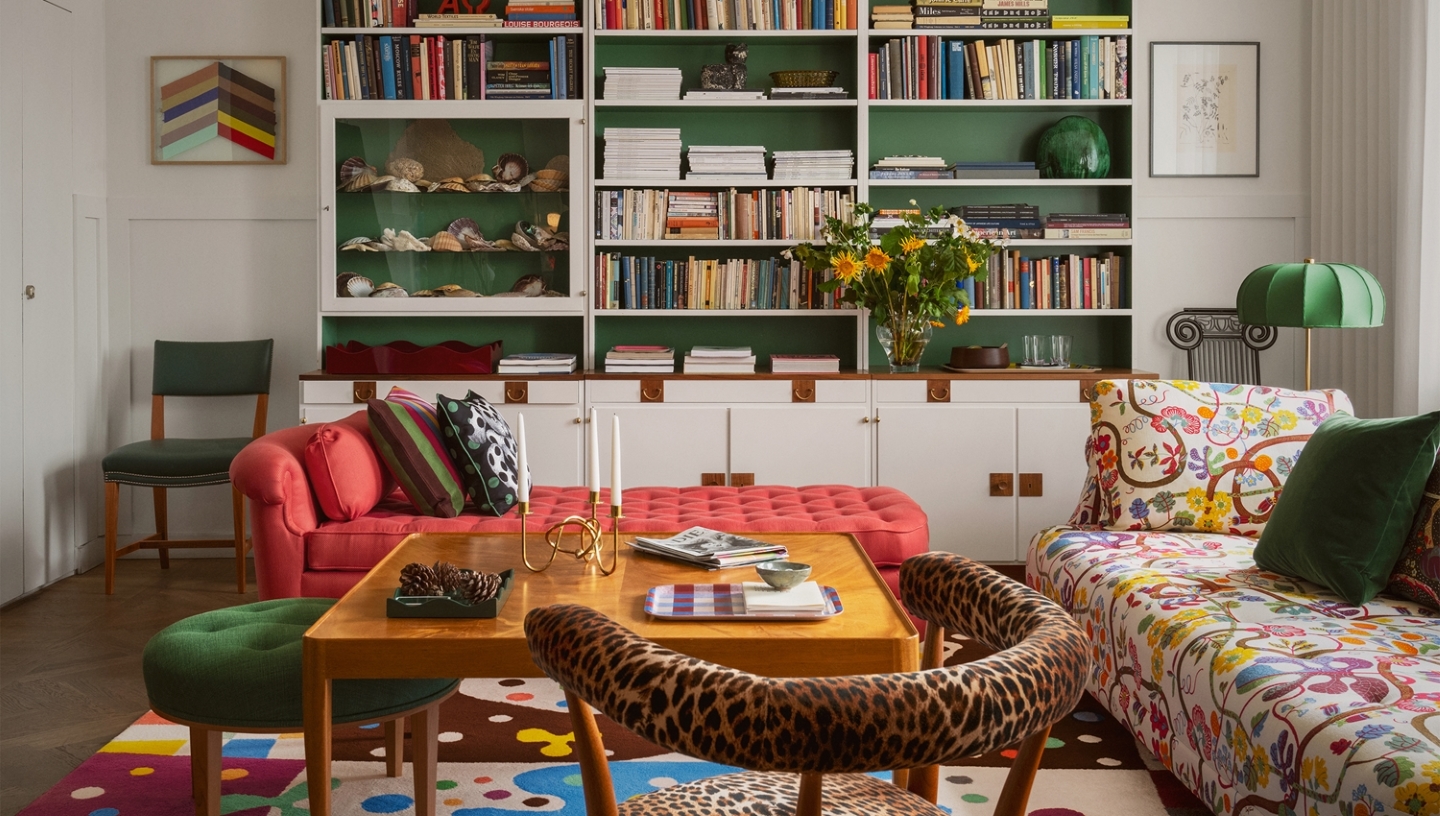
Svenskt Tenn’s store on Strandvägen boasts maximalist, vibrant interiors that can instantly trigger your imagination and inspiration (All photos: Svenskt Tenn)
A Swedish pewter company’s 100-year journey began with a young lady in her thirties who founded it at a time when women had just been granted the right to vote and female entrepreneurship was still an alien concept in the country. With the inheritance she received from her father after his death, Estrid Ericson opened a store that doubled as a workshop in Smålandsgatan with craftsman Nils Fougstedt.
Under the name Svenskt Tenn (or ‘Swedish pewter’), the brand produced small, everyday objects such as plates, trays and jugs. Eventually, business bloomed and it moved to bigger premises on Strandvägen, where it is still located today. Ericson worked with many interior designers on different kinds of projects. These collaborations sparked her interest in furniture and she ended up establishing a department specialising in home furnishings.
A well-known hostess among her close friends and family, Ericson had a knack for table settings. She possessed exceptional skill in curating spaces, making them feel as though they were a theatre set filled with exciting stories. Her legacy lives on at the Strandvägen building, where the interiors are packed with beautiful precious products that instantly pull you in and trigger your imagination and inspiration.
A decade after the company started, Ericson met Austrian designer and architect Josef Frank through a friend. She commissioned Svenskt Tenn’s first piece of furniture from him, marking the beginning of a 30-year creative partnership.
estrid_ericson_och_josef_frank_i_butiken_svenskt_tenn_arkiv_och_samlingar_foto_lennart_nilsson.jpg

Considered one of Sweden’s most important designers of all time, Frank was admired for his august range of whimsical patterns. He resisted limitations and straightforward designs as he emphasised freedom and maximalism in his artistic endeavours. “Standardised interiors would make people all too uniform,” he claimed.
To him, patterns can be something for the eyes to focus on, and in that way, they are soothing rather than disruptive. “The monochromatic surface appears uneasy, while prints are calming, and the observer is unwillingly influenced by an underlying slow approach. The richness of decoration cannot be fathomed so quickly, in contrast to the monochromatic surface which doesn’t invite any further interest and therefore one is immediately finished with it.”
The Vienna-born designer also had a strong interest in botany. Some of his favourite floral motifs to play with were lawn daisies, tulips, roses, bindweed, forget-me-nots, violets, lilies of the valley, crocuses and grape hyacinths. His quirky and detailed illustrations adorn Svenskt Tenn’s products such as cushions, rugs, tablecloths and pot holders to this day and have become quite the signature prints the label is famous for.
There are over 3,000 sketches and 250 textile prints signed by the designer in its archives. Much of the items sold today were born out of Frank and Ericson’s creativity some decades ago.
As a venture that values heritage, history and craftsmanship, Svenskt Tenn makes it its mission to preserve and protect these elements. One way is by maintaining collaborations with producers that have been working with the company for generations. While its textiles are manufactured in the UK, France and India, a great majority of upholstered furniture is produced in Sweden.
svenskt_tenn_stol_568_svenskt_tenn_est_1924_linen_450_6_bla.jpg

The illustrious Swedish interior design house kicks off its centenary celebrations with its jubilee pattern called “Svenskt Tenn Est. 1924”. It is one of Frank’s many creations that will be in the spotlight throughout the year. Composed in 1949/50, the print initially went by the name “Stockholm” and was only customised for a few loyal customers. Presented in red, blue and green, it showcases the designer’s interpretation of central Stockholm, featuring popular streets such as Folkungagatan, Karlavägen, Drottninggatan and Mynttorget, a public square in the old town of Gamla stan.
This map fabric exhibits many similarities to Frank’s “Manhattan”, both in motifs and colours. Svenskt Tenn works with Lancaster-based enterprise Standfast & Barracks, which is also celebrating its centenary this year, to print the special material.
A tribute to Frank’s groundbreaking oeuvre as well as to honour Ericson’s body of work, which has been a significant part of the Swedish design landscape, the pattern is unveiled in a variety of products, including linen (available for purchase by the metre), scarves, cushions, trays and limited-edition furniture and lamps.
The brand is planning to roll out a large amount of furniture and textiles inspired by designs from its archive — something it has not done before — throughout the year. Most of these products have never been in production and some have not been manufactured in a long time.
The Svenskt Tenn 100-year celebration pays homage to Ericson and Frank, keeping their legacy alive in a way that is worthy of them yet still relevant to contemporary consumers.
This article first appeared on May 13, 2024 in The Edge Malaysia.


